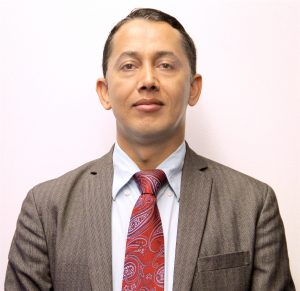Reposted from Transnatioanl Writing blog
In part 1 of this post, I shared assignments and activities that I use for teaching and promoting translingual skills, incorporating transnational issues, and fostering cross-cultural communicative competence in an undergraduate special-topic seminar titled “Global Citizenship.” In part 2, I would like to share how I try to do the same in a more more conventional first-year writing course, titled “Intermediate Writing Workshop,” one that is required of all students across the university. The lack of curricular space makes it relatively harder to achieve the same goals in mainstream writing courses, but I have been inspired by how well students have responded so far.
ACTIVITIES AND ASSIGNMENTS FROM A CONVENTIONAL WRITING COURSE
Activities/Discussions: Words, Idioms, world Englishes— Critical language awareness is important in any writing class. So, when discussing cultural/contextual meanings/connotations of complex terms, I introduce words and idioms from other languages and help students compare the social/cultural construction of their English translations/equivalents in the US. I also encourage students to share words and concepts from other societies/cultures where they see fit. Here are some of the resources that I used to facilitate classroom discussions: this hilarious failure of machine translation,
this list of un-translatable words in other languages, this clip from the movie Outsourcedwhere Indian English and American English clash! Introducing unique words/idioms and language variations prompts great discussion of usage, appropriateness, political correctness, etc; it also promotes the discussion of “standard” English in academic writing in terms of context, genre, convention, and power dynamics.
Assignment: Discussion/Review Essay Exploring Multiple Perspectives— This assignment requires students to write about a contested issue “without” taking a position on it, instead viewing it from the perspectives of different stakeholders (possibly in different contexts, cultures, or countries). I also call this the multi-dimensional research argument. For this assignment, students have written about topics like socialist healthcare system, gun regulation, and the benefit of nuclear weapons (!) by studying how they are understood or practiced/implemented in different countries around the world. Through this assignment, they not only learn the essential skill of “literature review” but they also deliberately diversify the perspectives instead of finding whatever supports (or helps develop) a singular thesis/position of their own.
Assignment: Research Paper on Global Issues— In my experience, one of the best ways to make writing assignments most engaging and educational is by asking students to research and write about an issue of global/transnational significance. Students want to learn about broader issues in the world, and while doing so, they develop not only knowledge of the subject but also develop complex perspectives, understand contexts, and appreciate different value systems. For this research paper assignment, students have written on topics like human trafficking, unfair trade treaties, social change, the role/influence of emerging technologies, and cross-cultural conflicts. I must add that the engagement and sophistication of papers my students have written so far have also had to do with the appropriate terms, frameworks, and guidelines that I provide them in the process of learning and presenting ideas. As students connect text to self and text to world, I make sure that they go beyond the more common, superficial, or stereotypical patterns of thought that they may have adopted from society. I design activities and assignments like this so as to nudge students in the direction of recognizing complexity, embracing different perspectives, and cultivating a sense of global citizenship.
Assignment: Academic Transition Narratives— In classes with newer international students, I assign an essay that asks students to describe and reflect on an incident or issue from/about their first entry into the American university. Some students write about how they learned the terms, concepts, and conventions of academic writing; others go on to describe the underlying epistemology and ideology of university education and academic disciplines. Local students write about their “transition from school to college,” but in addition to that, the “wash back effect” of this assignment on them is tremendous: working with international students helps them to look at the local academic culture from fresh new perspectives where they have taken things more for granted.
Activity: Peer Feedback— In classrooms that are diverse, commenting on one another’s work is a perfect opportunity for practicing translingual, transcultural, and transnational communicative/social skills. Even more importantly, it is an opportunity to learn what “not” to do when they are working across language, cultural, and epistemological borders/barriers: for instance, I ask domestic students to NOT focus on grammar and syntax in international, nonnative English speaking students’ drafts until toward the end of the writing process. I also remind domestic and international students to try to look at things from one another’s perspectives, to have follow up discussions about the broader social, cultural, and historical/political contexts underlying their writing, and so on. And I encourage students to suggest different perspectives, challenging each other to best account for the complexity of the issues they are researching and writing about.
As I hope the activities and assignments above have helped to highlight, teaching translingual skills enhances the teaching of writing and communication as a means to achieve the broader goals of education: promoting students’ appreciation of complexity of issues; preparing them to successfully communicate with diverse audiences; encouraging them to cultivate open minds about differences, conflicts, and possibilities for transnational and cross-cultural understanding; and improving their chances of being socially and professionally successful in an increasingly globalized world. Incorporating diversified knowledge and awareness further helps our students interact, live, and work in harmony with people from or in other cultures and countries around the world. In our time, thatworld is already with us, and our students need translingual, transcultural, and transnational skills, knowledge, and awareness in order to survive and thrive in it.



